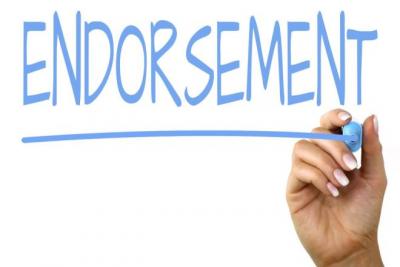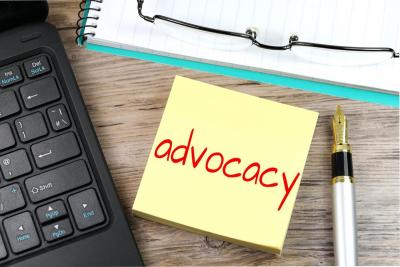
The term "employer brand" was first used in 1990 by Simon Barrow, president of People in Business, and since then, there have been many different definitions in the last 30 years.
During the last decade, employer branding, ie. employer branding has become a hot topic for many companies in the region.
But being a topic within a company does not necessarily mean giving it priority or fully understanding what it is all about. In this text, we will try to explain what employer branding really is. How do we define the goals, what are the typical challenges, how to start the whole process and how to implement it.
What is employer branding?
The term "employer brand" was first used in 1990 by Simon Barrow, president of People in Business, and since then, there have been many different definitions in the last 30 years. The reason for this is that employer branding is a discipline that is multi-dimensional and complex, by its nature and manner of execution and no less complex than brand marketing aimed at consumers and / or potential customers. In the marketing world, the brand is the sum of users' perceptions of the company, reputation, quality of service, values ...
Essentially, with a brand, we primarily care about how others see us and what they would say about our brand if we weren’t in the room. However, branding also has a much deeper meaning. Branding is an attempt to connect more deeply with customers and try to present the company (product) through an authentic story of why your company actually exists, what value you create and why it is important, etc.
Just like in marketing branding, in employer branding the focus is on the end user, which in this case is the potential worker.
With that in mind, the employer brand of your company is the perceived identity and reputation of the company in the labor market and the general public, whether it is an accurate reflection or not. Your employer branding is based on a number of factors, including policies, programs, rewards, and the benefits and benefits you offer to potential candidates and existing employees. Although, it may sound strange to many, even if you have not created an employer branding strategy, your employer brand already exists and is experienced every day. There is a chance that your brand is perceived differently than what you want.
Namely, everything you do now in terms of your workers has an echo in the market. Your employees talk to employees from other companies, your former employees talk about their experience in the company, and your marketing activities also create a certain image in the market.
A cross-section of everything that is said and written in the market about your company as an employer, represents your branding in the labor market, and the quality of your brand depends on whether you will more or less attract new workers whose profile, both professional and character, meets wishes and needs. your company.
In order to strategically manage the development of your company's human resources, employer branding must not be a spontaneous and situational activity, but it is necessary to approach it from a strategic perspective, and it is important that the activity is aimed at achieving defined business goals.
The business goals that are typically sought to be achieved through employer branding are:
- Attracting and hiring workers with knowledge and skills that meet the development needs of the company
- Retaining the best workers in the company. The best workers today have more choices than ever and are more likely to keep them if the company has a great reputation- Increasing employee engagement and increasing labor productivity. If you have great employees in the company, the excitement of being able to work in your company will undoubtedly result in better employee work and higher productivity.- Faster employment of required experts
- Faster company growth
- Increase revenue and profitability
- Creating new business revenue lines
Of course, it is possible to define some other goals that need to be achieved by applying an employer branding strategy, but these are the most common and can be a good start in defining your employer branding strategy.
As in other business segments, the creation of an employer branding strategy needs to be approached in a planned manner, with clarity on the current situation and the situation we want to have (achieve) after the implementation of the new strategy.
Based on the experience in numerous companies with which we have collaborated on HR projects, the next steps are "best practices" in terms of employer branding.
Analysis of the current situation
The first step that must be taken when creating an employer branding strategy is to analyze how (now) your brand stands on the labor market, both with existing employees and the general public, or with everyone you want to address as potential employees.
There are a few things you can do to analyze the current situation:
- Analyze comments on social networks
- Create satisfaction questionnaires that you send to existing workers
- In-depth interviews with employees and management
- Hire a consulting company specializing in HR process analysis
In addition to the above, perhaps the most effective activity you can take is Employee Journey Mapping workshops (employee travel mapping workshops). Before describing the workshops themselves, it is necessary to define what exactly is an employee trip (employee trip).
At its core, employee travel consists of all the events, points of contact, career milestones, and activities that employees go through during their employment with the organization. The journey of employees begins as soon as the person comes into contact with the company through the hiring process, then through the work process and ends when the person leaves the organization.
Human resources professionals sometimes use the term "important moments" as a synonym for employee travel. Why? Because the main goal of identifying employee travel is to understand what are the most important moments for employees during their employment. Travel helps companies understand the components that have a positive impact on employee motivation and engagement in the workplace.
A typical employee trip has several key elements:
Employment and induction
- Compensation and benefits
- Personal development (acquisition of knowledge and skills)
- Rewarding by performance
- Internal processes and cooperation with colleagues
- Degree of digital maturity of the company
- Possibility of advancement
- The company's attitude towards the employee when leaving the company
Employee travel is analyzed through a workshop format for mapping employee travel. Before the workshops themselves, it is necessary to define several key elements. First, it is necessary to define the persons for whom we will analyze the travel of employees.
Personas are a concept that has been used for decades in marketing, and more recently in user experience programs, as a way to understand the moments that are important to certain customer groups. The concept of persona is becoming increasingly important in the context of human resource development management as companies increasingly understand the need to provide their employees with personalized, customized experiences as part of their employee experience programs.
An employee's personality is essentially an idealized / typical representation of a group of employees with similar characteristics, experiences, and behaviors. Traits may be related to demographic characteristics, knowledge, skills, behavioral habits, etc. Persons are based on the data and insights you have into the individuals who make up your workforce and bring them to life by building a narrative around them.
There should be no more than 3 to 4 people within the existing workforce. Once we have defined the story for each of them, we create a story for each of them, we start conducting workshops where we look at the experiences of each person in certain elements of the employee's journey.
Also, after defining the personas, we need to determine what the key moments are for each of the personas. Key moments for e.g. young men of 25, without a family, are not the same as the key moments for e.g. a 42-year-old man with two children. Their life priorities and obligations, as well as life and business experiences create different needs and expectations. Something that will make a more experienced colleague happy does not necessarily have to be a motivating factor for a less experienced but ambitious colleague.
Once we know who the personas are and what the key moments are, we need to define which KPIs and OKRs we will monitor in the key moments for each of the personas.
Through a well-realized employee travel mapping workshop, we will gain numerous insights into the current pain points for each of the personas. Pain points are problems and challenges that employees have in their daily work, which are related to processes, IT systems, applications, organization, decision-making processes, etc., and which are the moments that distinguish between good and bad employee experience.
Employee travel mapping workshops are a great tool for detecting what needs to be improved in the company in order for existing employees to be satisfied, and thus the company's ambassadors who actively create a positive brand of the company as a potential employer. If you do not have experience in conducting employee travel mapping workshops, be sure to seek the help of a company with experience in conducting such workshops.
Analysis of the current selection and recruitment process
(Your) the whole recruitment and selection process has a bigger impact on (your) brand than you think. This includes your initial job advertisements, application process, interview stages, final offer and hiring of new employees. Is your brand clear to candidates during this process? Does that show them exactly what it's like to work in your organization and explain why they would want to?
Is the process efficient, timely and functioning properly? Do you attract the right talent for your organization and ensure that their values are aligned with yours? Do the candidates get everything they need before the first day? And finally, are they excited to start their business with you?
A positive engagement process will lead to excited, motivated and competent employees, lower turnover rates and more efficient and productive teams. On the other hand, a negative experience of entering an employment relationship can lead to employees being twice as likely to resign.
Define your Employee Value Proposition (EVP)
Many companies still make the mistake of considering that salary and standard contract elements are the most important elements on the basis of which potential new workers make employment decisions. In today's economy, it is still an important part of decision-making, but still only one of the elements on the basis of which a decision is made.
EVP should also contain clear answers to what we want to communicate in the following categories:
- Compensation
- Benefits
- Career development
- Work environment
- Business culture of the company
When defining EVP, we should have two perspectives in mind: the company perspective and the employee perspective. An EVP in which we only take into account the company perspective, and not take into account whether it is interesting to the targeted profiles of new employees, will be unsuccessful.
A successful EVP is put in the shoes of the desired employee and the definition is based on the hypothesis, "What is there for me as a worker?". Reconciling company interest and employee interest is not always easy, but an effort must certainly be made, because if we have something we consider good and the labor market has a different opinion, then our employer branding will be bad. A well-defined EVP has a clearly developed structure for each of these 5 categories, so that there is no category that causes confusion or dilemma.
What should each of the categories include?
The compensatory element of the EVP should certainly include the following: clearly defined gross and net salary, salary grades that can be achieved in case of achieving the set goals, clarity of the variable part of the salary (if any), fair and transparent system of possible bonuses, defining deadlines for salary payment, etc.
Benefits should have a clearly defined policy on: annual leave, daily leave, arrival and departure policy, insurance policy, paid education, assistance in starting a family or having a child, days off in the event of the death of a close family member, use of a company car , use of mobile phone and computer, etc.
Career development should include a clearly defined policy regarding criteria and deadlines for advancement, providing feedback, external training paid by the company, internal training, the possibility of consulting with superiors and colleagues from the company, etc.
In the work environment, it is important to define the degree of autonomy in work, the balance between work and family life, clearly delineated rights, obligations and responsibilities, how recognition is given to success and special achievements, etc.
Business culture is one very important element that needs special attention. It should include clarity on company goals and plans, the way we treat our colleagues, how we work together and what team spirit we want to create, and everything else we consider an important part of our company's business culture.
After we:
- Analyze the current situation,
- Define Persons and their key moments,
- Define pain points in processes, applications, organization, etc .; which cause frustration and dissatisfaction of employees
- Analyzed the existing process of selection, recruitment and introduction to the job
- Defined EVP
We have a clear picture of who we are addressing, what we are communicating and how we are attracting potential employees to join our company. All that remains is to decide where, when and how we will communicate our EVP according to the target persons.
Communication channels are the media we use to promote our messages (e.g. website, email, youtube video, newspaper ad, TV commercial, etc.) while the touch point is any interaction a potential employee may have with the company. For example, an employee may interact with a company in the following ways:
- He or she read a post on the company's blog
- He or she visited the company's LinkedIn page
- He or she talked to a team member on his career day
- He or she visited your office
- He or she was at several stages of a job interview
- He or she filled out a job application
- He or she watched your company's promotional videos on the official Youtube channel
Communication channels are typically one-way, while touchpoints are places where you have two-way communication with a potential candidate and where you can leave a positive impression on the candidate. Depending on the person, you choose where to contact the potential candidate and which elements of the EVP to promote, and decide how you will collect data on these interactions and how you will react to the data on the candidates and their behaviors at the points of contact. where they reacted in some way.
This is an extremely important part of the Employer branding strategy, because it is about executing everything you have prepared in the previous steps and there must be no mistakes. The strategy should be clear and precise, and implementation timely and efficient.
Developing and building a successful employer branding strategy is a great way to increase awareness of your organization and attract top talent. The modern economy requires a different approach to the labor market, where the war for talent is intensifying and where the reputation of companies is an increasingly important currency on the basis of which top candidates make decisions about their next business challenge.
If you carry out the process of creating an employer branding strategy as described, and if employer branding is an integral part of your HR strategy, you will earn a great reputation over time; a company that people actively want to work for, who are ambassadors of your company, proud of where they work and ready to tell everyone. If you have not yet dedicated time and resources to building your employer brand, start today - it will pay off.



